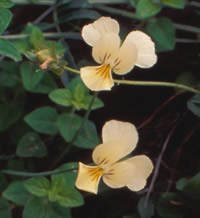| Viola ucriana | |
|---|---|
 | |
| Scientific classification | |
| Kingdom: | Plantae |
| Clade: | Tracheophytes |
| Clade: | Angiosperms |
| Clade: | Eudicots |
| Clade: | Rosids |
| Order: | Malpighiales |
| Family: | Violaceae |
| Genus: | Viola |
| Species: | V. ucriana |
| Binomial name | |
| Viola ucriana Erben & Raimondo | |
Viola ucriana is a species of plant in the Violaceae family. It is a violet that is endemic to Sicily in Italy, where its known in Italian as Viola di Ucria.

